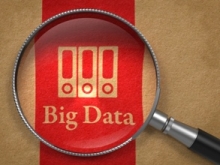Cloud based, SaaS based Application
Since the age of learning to make fire, humans have started learning voraciously, and never stopped. Now comes the age where new technological advancements transforms the way we learn.
Universities and Institutions have become more adaptive and have gladly embraced new technologies; be it cloud based SaaS model application for administrative purposes or the e-learning model for the students. Besides offering better storage and lower costs, this model alleviates the need for constant update of software by providing a cloud based architecture that is automatically updated.
Higher Education Resource Management Systems for better administration
The higher education resource management systems addresses to the complexities that the Universities and Institutions face in operations such as human resources, document management systems, daily management, recruiting admissions, course curriculum management, attendance, automated class scheduling, student life cycle management, billing management system, classroom management, infrastructure management, and other administrative activities.
The higher education resource management systems had indeed completely institutionalized the management system in a new way. It delivers not just the fundamental administrative and management functions, but optimizes the entire platform of planning and control of academic resources, deployment, and capabilities.
Software as a Service (SaaS) Based Application
The Cloud based SaaS model promises to deliver the complete hardware and software management system required for the higher education institutes. This integrated management system enables institutions to stay focused and leverage their expertise on providing an efficient learning system.
Apart from helping Institutions deliver virtual classes and online learning programs, the SaaS model facilitates student registration, enrollment, learning content delivery, assessment, and monitoring of learner’s progress.
SaaS Offers Multiple Institutions Support
The SaaS model has evolved to become a dynamic enterprise solution model that supports multiple institutions. The services offered by this cloud model enable institutions to move seamlessly from one cloud platform to another. This method of resource pooling enables Institutions to share resources, independent of the location with multiple accesses from various departments. In fact, the multi-tenant architecture delivers better scalability, management, and security.
SaaS Provides Customized Solutions that Prioritize Rules and Regulations
Among other challenges faced by Universities and Institutions, complying with numerous rules and regulations is a real big challenge. SaaS applications offer the options of customizing the enterprise solution based on the rules and regulations of each institution, making it completely configurable and rule based.
SaaS model meets the Demands of High Performance Administrative Challenges
SaaS based applications provide a pivotal support in areas of high performance operations such as admission, registrations, and other management activities. Besides offering more storage space, it promises increased reliability and an improved interface that supports a hassle free functionality. Offering an extensive support in the complete management process, the SaaS model aims to provide improved manageability and an agile operability.
SaaS offers a Hybrid Cloud Application Support
Changing from the current application to the SaaS based application may seem difficult for large Institutions. The SaaS model offers hybrid cloud application in the immediate term, thereby providing on-demand access to a pool of applications. Multiple cloud support from both public and community offer the comfort of application portability and data access. The hybrid solution also provides support for some application running from private server and others from the cloud.
Integration of other SaaS Based Applications
Another remarkable feature of this system is the integration of other SaaS based applications such as campaign management, scheduling, grants and proposal management, and LMS platforms. SaaS model supports the integration of other applications and helps students, staff, faculty, and alumni to collaborate and communicate online with each other.
Integration of SaaS based applications connects all applications in real-time environment, making it less time-consuming and cost effective for Institutions. It enables seamless sharing of information in the Cloud, where the users have the choice to access their applications based on their specific needs.
Not all are ready to embrace SaaS
- Institutions want uniqueness in the way they run the business
- Each institution considers their business processes to be unique
- They are not ready to move all the data to the cloud
- They prefer a hybrid model
What will make SaaS a Success?
- Support hybrid Saas model
- Ability to be provide customization and localization support
- Design of the education enterprise application has to be more configuration based
- Business rules engine need to be integrated
- Provide open API and pre-built integrations to various Saas based offerings
- Application should embrace modern architecture (loosely coupled, modular, container based)
Modules that can potentially be SaaS
- Online application –
=> or any application for that matter that will avoid papers in the institution - Registration
- Course curriculum management
- Continuing education
- Proposal management
The Future – Cloud based Learning and Management Systems
As per the International Data Corporation (IDC), the global spending on public cloud services is expected to reach more than $141 billion in 2019 from that of $70 billion in 2015.
Higher education institutions will meet the demand for the personalized learning by adapting to the cloud based enterprise architectural management systems. In addition to increasing the operational efficiency, it will ensure the delivery of a transformative learning experience to the students.
Happiest Minds as a company enabling digital transformation is also driving the race of building digital books by some of our solution processes which includes, Content Ingestion, Content Enrichment, Analytics, Integration, and Commerce.

Vish is Senior Director and Head of EduTech at Happiest Minds is closely invested in the intersection between education and technology. Having worked in the education industry for two decades, Vish has a deep understanding of how digital technologies can be used as a key enabler in facilitating better learning experiences.
At Happiest Minds, Vish works with some of the largest EdTech and publishing companies across K12, Higher Education, Professional and corporate learning segments in helping them leverage digital tech to deliver better learning outcomes.








